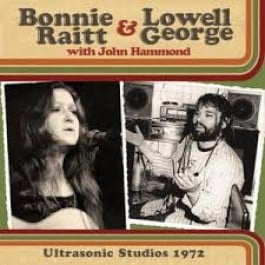This show from 1972, the era of open opposition and student revolt at the U.S. in Vietnam, is in essence a blues fest with some of the up-and-coming youngsters on the scene of the time. Bonnie Raitt took blues away from the sturm und drang of Janis Joplin and softened it, but to no bad effect. Steve Winwood s Can t Find My Way Home in her hands is prettified, but passionate, meaningful and ultimately gorgeous. Lowell George from Little Feat added a toe-tapping rhythm to his version of the blues; he funkified it, and in doing so helped create a body of work of breathtaking magnificence.
John Hammond stayed true to the form, but ultimately had the least successful career of the three big hitters on this recording. The blues purists welcomed the existence of Hammond and others of similar sway, and indeed authentic representation of original folk styles is to be cherished, but equally, if no one had subjected the Blues to adaption and advancement we would not have any rock music at all - just as if Bob Dylan had not adapted folk music, to the chagrin of purists like Pete Segar - we would be bereft of an enormous artistic legacy still now providing inspiration to many.
The community spirit was alive. Raitt covers fellow singer-songwriter Jackson Browne s Under The Falling Sky , the aforementioned Can t Find My Way Home and up and coming songwriters Eric Kaz and Libby Titus Love Has No Pride . Lowell George backs Raitt s set and marks his presence with his stinging notes and snaking lines. Although a fine singer in his own right, this evening Lowell largely offers support with some achingly beautiful picking instead. But when presenter Ken Cole requests he sings his best known tune, Willin , George instead offers new composition A Apolitical Blues . The song is subversive. Faking apathy, it saves its best line for verse two when he sings Apolitical Blues, that s the meanest blues of all . This recording represents something more than a gig - a Hootenanny if you will - indeed there was no paying audience to speak of in attendance. Only those hanging out or specifically invited witnessed proceedings in full. Although those lucky enough to be in the vicinity of NYC s WLIR FM could listen in to the synchronized broadcast - a feature of many rehearsals and sessions at Ultrasonic during the early to mid 1970s. That this legendary occasion was captured for posterity and for the enjoyment of those today still interested in such timeless music and spirited events, is nothing short of a blessing.







